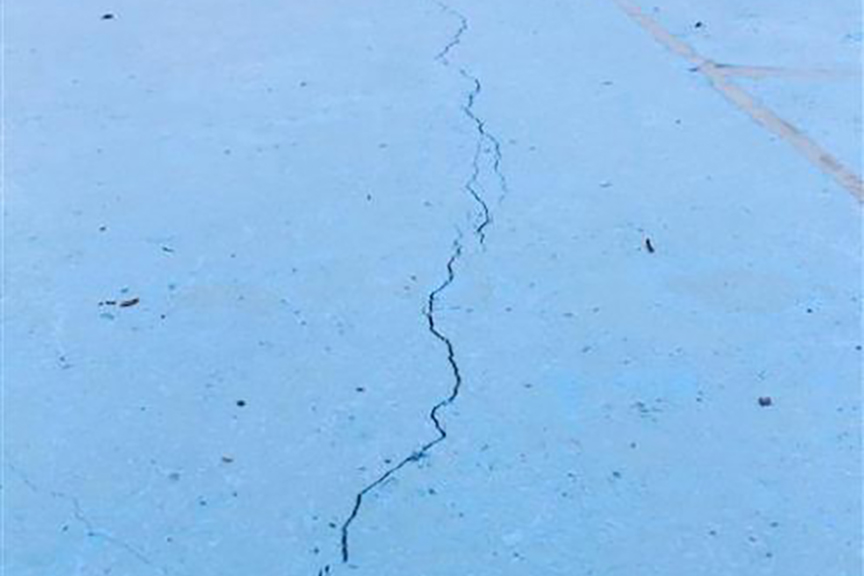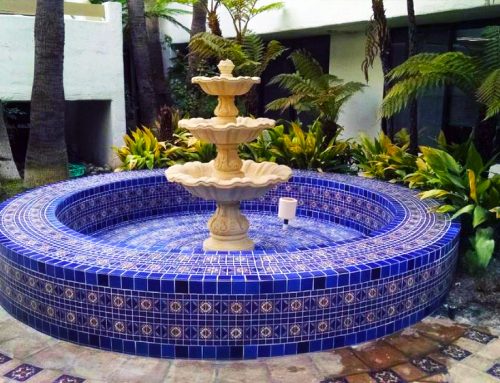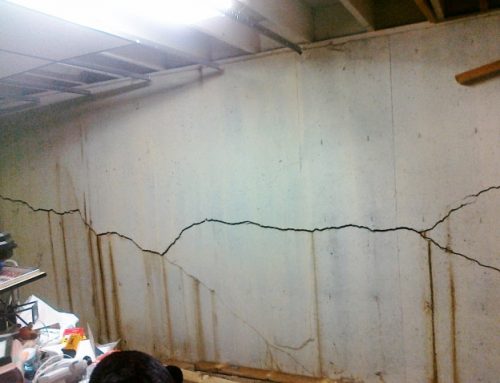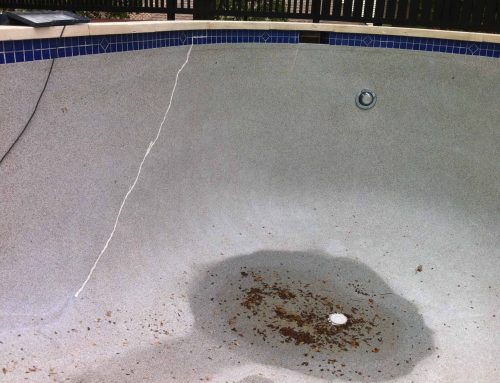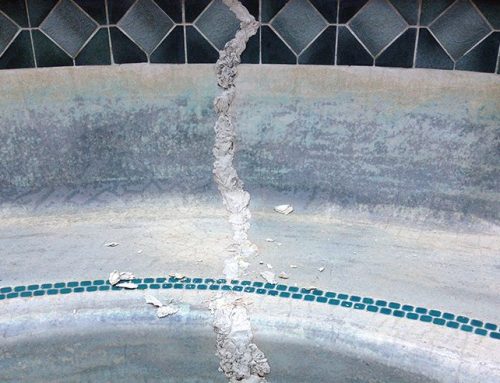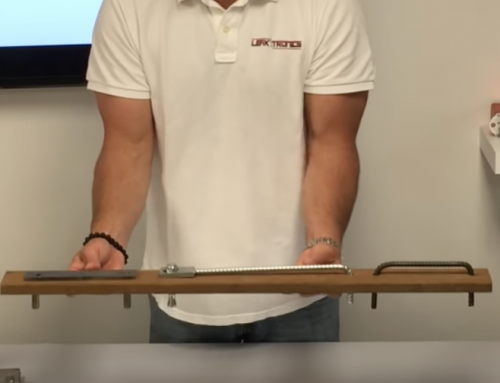It doesn’t matter what you call it, “Wicked-Bond,” “Cure Magic,” “Crack Spackle,” – it comes down to the same situation, underwater epoxy does nothing to stop structural cracks, and what water loss it does stop will FAIL in the first year after application. Guaranteed? Yes!
First, for the consumer, I want to share some information from the US Government on their study performed using multiple “underwater sealants” on structural crack repair. After that we’ll talk common sense.
These are some of the statements shared by the United States Department of the Interior, Bureau of Reclamation, Materials Engineering Branch.
1. “Joint sealants are normally applied to dry concrete and states that concrete must be clean, dry and fully cured.”
This makes sense, but “underwater epoxy” has one big red flag that works against that statement. It isn’t dry.
2. For remedial or maintenance work, the normal procedure is to drain the canal (or otherconcrete structure), dry-out the joints, sandblast, airblast, apply sealant, cure 1 to 7 days, and return to service.
So the best application for “underwater epoxy” has been described as to drain, dry, sandblast and prepare the surface for epoxy application. This isn’t underwater.
3. Chemical grouts are known to be effective in sealing leaks in wet conditions (not even underwater, just wet); however, they are quite expensive and require specialized application equipment. Rapid-set concretes can be effective and economical, but cannot accommodate continued joint movement.
If a crack isn’t secured, it will continue to have “joint movement.”
4. Two-part sealants were mixed in the dry, and then loaded into a caulking gun or syringe for application. The sealants did not readily bond to the concrete, and extensive tooling (working with a putty knife) was required to remove trapped water and ensure intimate contact with the concrete.
It’s further information of how and why underwater epoxy doesn’t work.
5. Ultimately, of the dozen epoxies tested (no specific names here), all failed within the first 26 weeks of application due to movement of concrete, lack of adhesion or ill prepared surfaces that required draining the pool, sandblasting, grinding and air blasting to remove surface particles.
What we read in this study is that applying “underwater epoxy” by diving into a pool and trying to get it into a crack simply does nothing more than fill a crack for a short period of time, provided the crack has been drained and cleaned … which means diving in the pool won’t work.
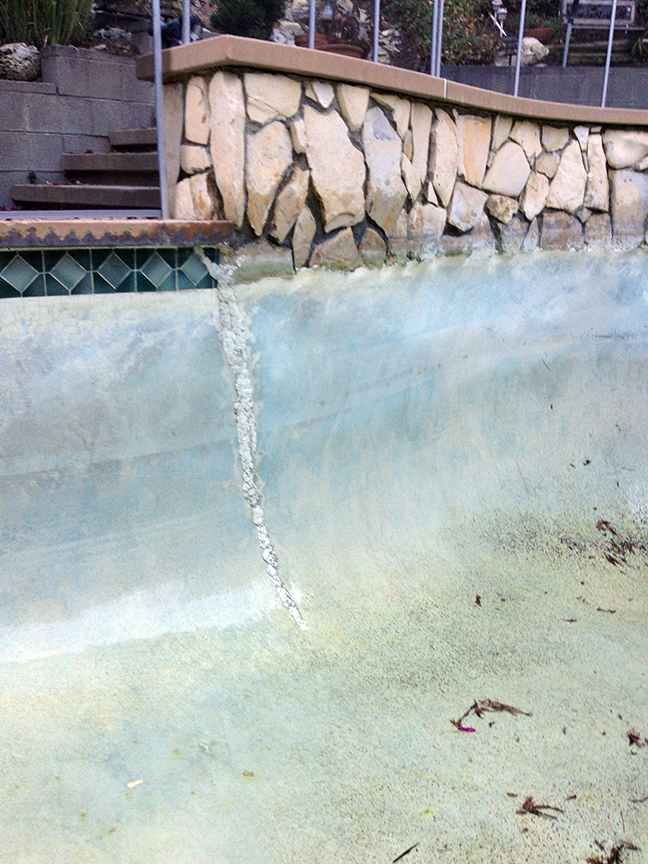
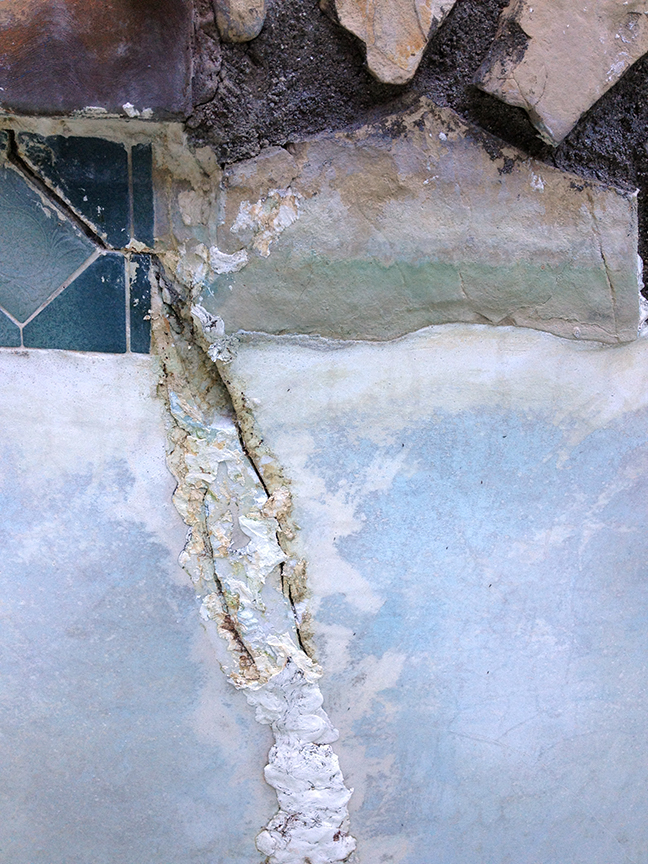
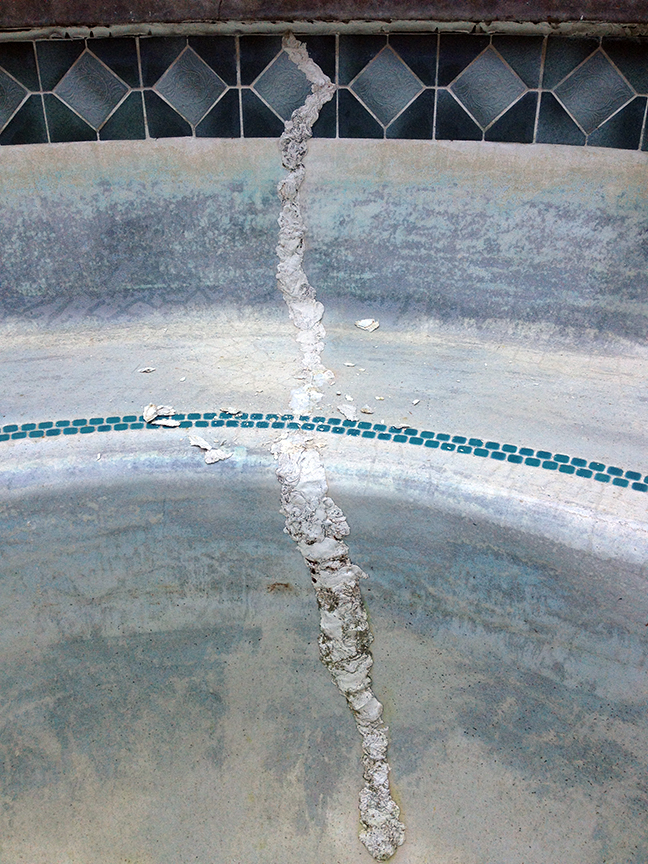
CHECK OUT THESE EPOXY REPAIR FAILURES
Now, let’s get down to the brass tacks here. The common sense behind what you, as the consumer, need to fix and show to do it properly.
Your pool has a crack. There is pressure behind it, causing it do spread, widen, get longer or shift. Epoxy doesn’t resist that pressure, so when squirted into the crack, it doesn’t do anything to stop the crack from moving. You need a counter-resistance to literally push back against the pressure causing the crack to get bigger. That’s what Torque Lock Structural Staples do, and Torque Lock Staples don’t need to be re-applied after 26 weeks; they are permanent.
Torque Lock Staples create a controlled-compression around the outside of the crack. What this means, in simplest terms, is that whatever is pushing against the crack to cause it to get bigger, the staples push back. The staples apply up to 5000 lbs of compression to either side of the crack. Cracks want to get wider, but Torque lock Staples patented design and installation method stops them from getting bigger. Check out how in this video:
Installation of Torque Lock Structural Staples is easy. With the pool drained, the contractor uses a method called Misting and Mapping. By spraying a light mist over the structural cracks, the concrete holds the moisture for about 20 minutes. This allows the contractor to identify the full length of the crack, marking it’s location with a wax crayon.
First, the contractor will drill a pilot hole at the ends of the crack. This stop structural cracks from lengthening. Then, using the templates provided in the Staple Kit, the contractor will mark the areas where staples will be inserted into he wall. At every 12 inches, a staple is set to secure the crack against movement. Holes are drilled for the staples to be inserted into.
Each style has two posts. One post is a permanent fixture and the other is on a patented offset cam that will rotate into position using a torque wrench. Once “torqued” it provides the compression needed to stop structural cracks from spreading. This is something that absolutely no epoxy in the world can, or will ever do.
The surface area where the staples will be inserted is chipped out, about a half inch of surface is removed and the area is cleaned out of debris. Staples are them set into the holes, again, at every 12 inches to ensure the best possible protection against shifting or movement in the crack.
Each staple is torqued to the prescribed poundage and the crack is now secured from any potential spreading, widening or shifting. The staples are permanent and do not need to be removed or replaced. They create the strength that is missing from where the crack occurred and permanently stop structural cracks from re-cracking.
The area where the contractor chipped out the surface is now covered with actual concrete. It generates the cracked area with the actual material that the rest of the pool is made of – concrete! Because the crack is secured, there can not be any separation between the new and the old concrete. It cures to a permanent seal.
For added protection, we cover the area with a waterproofing membrane, most contractors will do the same. Then the area is finished over and smoothed out to match the surrounding area. The crack is permanently repaired and will not fail in 26 weeks like epoxies do. Torqued Compression can’t be undone by time and pressure. Cracks are permanently repaired and the pool is ready to enjoy for a lifetime.
Handy homeowners and contractors can easily install Torque Lock Staples with basic hand tools, as seen on the Torque Lock Website and Videos. All Torque Lock Staple kits can be ordered directly from Torque lock and shipped to your door, and orders can be placed by telephone too.
Before you put your trust in a rubbery epoxy that does nothing to stop structural cracks, invest in a permanent solution that will save your pool and ensure that structural cracks do not continue to plague the longevity of your investment.
Call Torque Lock at 818-436-2953 or visit https://torque-lock.com to get more information and to order the only patented permanent repair solution for structural cracking.

